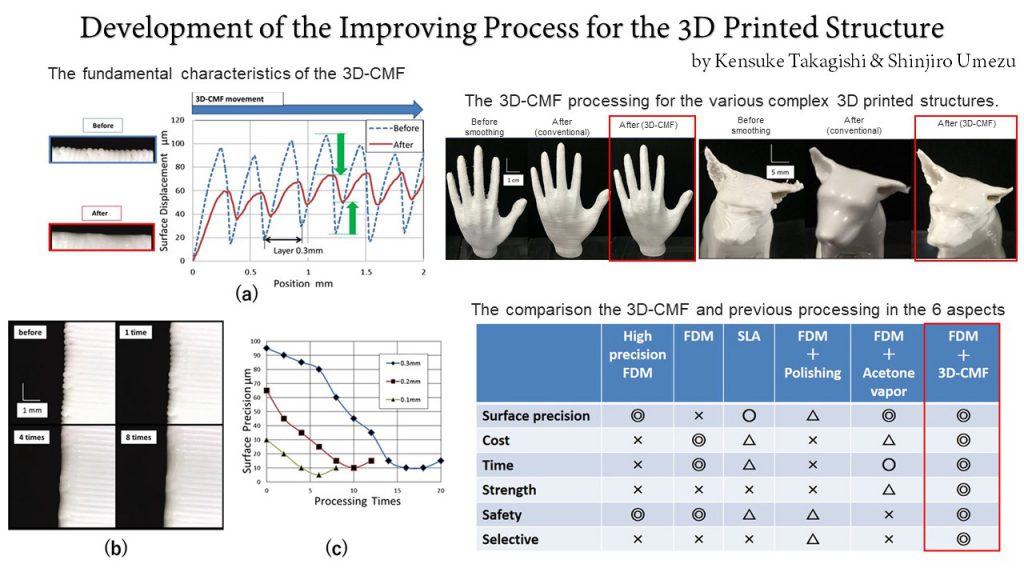Top Global University Project: Waseda Goes Global -A Plan to Build a Worldwide Academic Network
that is Open, Dynamic and Diverse

3Dプリンティング造形物の表面を化学溶解仕上げ(3D-Chemical Melting Finishing, 3D-CMF) 機構を開発。さらに、表面が滑らかになると造形物の光の反射量が増加することに着目して、画像化した造形物の明度によって仕上げ具合を評価する手法も公安しました。 3Dプリンティングが一般への普及が進んでいない原因として、造粉塵の発生、安全面などの問題があります。 今回開発した手法では、ペン型の機構から最小限の溶剤を吐出し、造形物の表面を溶解することで積層痕を充鎮し平滑化。積層痕を選択的に除去でき、熱溶解という科学溶解プロセスにより安全かつ安価で粉塵も発生しません。本研究成果によって、これまであまり普及してこなかった3Dプリンティングが一般家庭に浸透することが期待されます。
アブストラクト
The authors focus on the Fused Deposition Modeling (FDM) 3D printer because the FDM 3D printer can print the utility resin material. It can print with low cost and therefore it is the most suitable for home 3D printer. The FDM 3D printer has the problem that it produces layer grooves on the surface of the 3D printed structure. Therefore the authors developed the 3D-Chemical Melting Finishing (3D-CMF) for removing layer grooves. In this method, a pen-style device is filled with a chemical able to dissolve the materials used for building 3D printed structures. By controlling the behavior of this pen-style device, the convex parts of layer grooves on the surface of the 3D printed structure are dissolved, which, in turn, fills the concave parts. In this study it proves the superiority of the 3D-CMF than conventional processing for the 3D printed structure. It proves utilizing the evaluation of the safety, selectively and stability. It confirms the improving of the 3D-CMF and it is confirmed utilizing the data of the surface roughness precision and the observation of the internal state and the evaluation of the mechanical characteristics.
参考
Development of the Improving Process for the 3D Printed Structure
Kensuke Takagishi & Shinjiro Umezu
Scientific Reports 7, Article number: 39852 (2017)
doi:10.1038/srep39852

